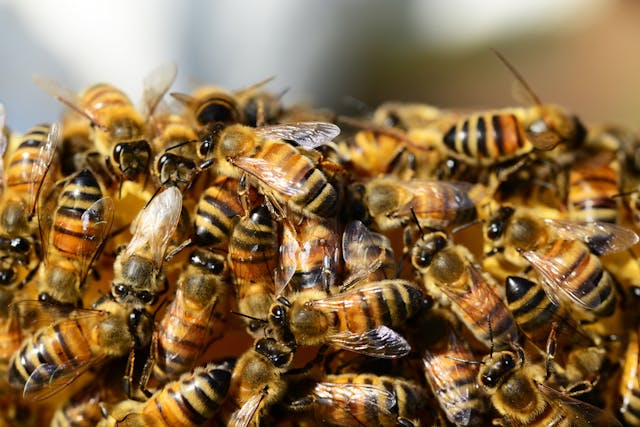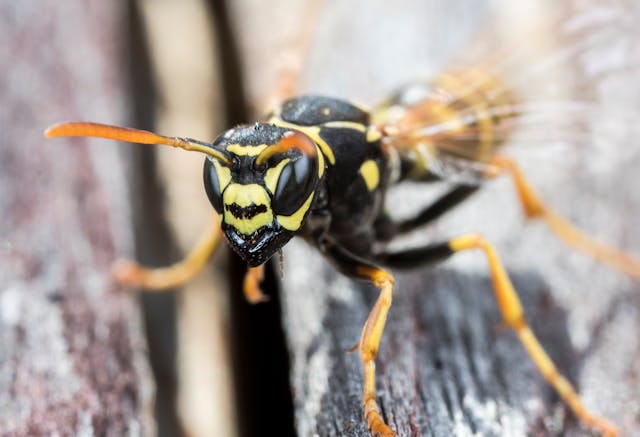Not every buzzing insect around your home is the same, and when it comes to honey bees vs. yellow jackets, understanding the distinction can make all the difference. Honey bees are essential pollinators, playing a critical role in the ecosystem, while yellow jackets are aggressive, territorial, and a frequent source of pest problems.
If you’re unsure which insect you’re dealing with, this guide will help clarify the differences and explain when to contact proof. Pest Control for professional assistance.
Honey Bee vs. Yellow Jacket Infestations

At first glance, honey bees and yellow jackets might seem interchangeable. Both are flying insects with the potential to sting, but their similarities end there.
Their appearance, behavior, and nesting habits reveal just how different they indeed are. Knowing what sets them apart can help you decide when to admire them from a distance and when it’s time to take action, especially if yellow jackets are moving in.
How to Identify Honey Bees and Yellow Jackets
The easiest way to tell these insects apart is by how they look.
With their golden-brown color and black stripes, honey bees have a fuzzy, rounded appearance. Those tiny hairs aren’t just for show; they help bees collect pollen as they flit from flower to flower. Their legs often look dusted with pollen, making them easy to spot when they’re busy at work.
In stark contrast, yellow jackets are sleek, smooth, and shiny, with vivid yellow and black markings. Their vibrant coloring serves as a warning sign for predators and humans alike. These insects tend to be more jittery in their movements, darting around with an almost frantic energy that sets them apart from the steady honey bee.
Behavioral Differences
Beyond appearances, honey bees and yellow jackets also act in very different ways.
Gentle and generally non-aggressive, honey bees are all about their hive and the flowers around them. They’re focused on gathering nectar and pollen, rarely bothering humans unless they feel threatened. Even when they do sting, it’s a last-ditch effort since it ultimately costs them their life.
Yellow jackets, on the other hand, are notoriously aggressive. They’re quick to defend their territory and won’t hesitate to sting if provoked. Unlike honey bees, they can sting multiple times, making them a bigger threat if their nest is disturbed. They’re also drawn to human foods, like sugary drinks, fruit, and meat, which often leads to unwanted encounters during picnics or backyard barbecues.
Where Do They Nest?
These skilled builders construct intricate hives made of wax. You’ll typically find their hives tucked inside hollow trees, nestled in wall cavities, or hanging from tree branches. A single hive can house thousands of bees working together to produce honey and wax, supporting their colony and pollination efforts that benefit the planet.
Yellow jackets create nests that are entirely different. Using chewed wood fibers, they form papery structures that are often hidden in underground burrows, wall voids, or high places like eaves and tree limbs. Their nests grow rapidly as the colony expands, and by late summer, you might notice a significant uptick in their activity.
Why It’s Important to Know the Difference

Honey bees play a crucial role in pollination, making them a welcome presence in gardens and yards. Yellow jackets, however, can be a serious nuisance and even a danger due to their aggressive behavior and tendency to sting first and ask questions later.
Their stings pack a painful punch and can lead to severe allergic reactions in some people. To make matters worse, yellow jackets don’t stop at one sting; they can attack multiple times, making an encounter even more hazardous.
What makes yellow jackets especially concerning is how unpredictable they are. You might not even realize you’ve disturbed their nest until a swarm starts defending it. This territorial behavior is particularly alarming for families with small kids, pets, or anyone allergic to insect stings.
It may seem tempting to handle a yellow jacket nest on your own, but it’s incredibly risky. Without the right equipment or experience, disturbing a nest can quickly turn into a painful and dangerous situation. These pests are quick to react and won’t back down easily.
That’s why calling in professional pest control is the smartest choice. Experts know how to safely locate and remove nests, using tools and techniques to keep you and your family out of harm’s way.
Call proof. Pest Control for Yellow Jacket Removal
If you spot honey bees, it’s best to let them go about their business. However, if yellow jackets have taken up residence on your property, you should call in the professionals.
At proof. Pest Control, we specialize in safe, reliable yellow jacket removal to protect your home and family. Our team knows how to locate and treat yellow jacket nests effectively, eliminating the problem at its source.
While we don’t treat honey bees, we’re happy to help you identify whether the insects you see are bees or yellow jackets so you can take the appropriate steps.
When yellow jackets invade your space, don’t wait for the problem to grow. Call proof. Pest Control for fast, expert assistance and reclaim your yard from these aggressive pests!

